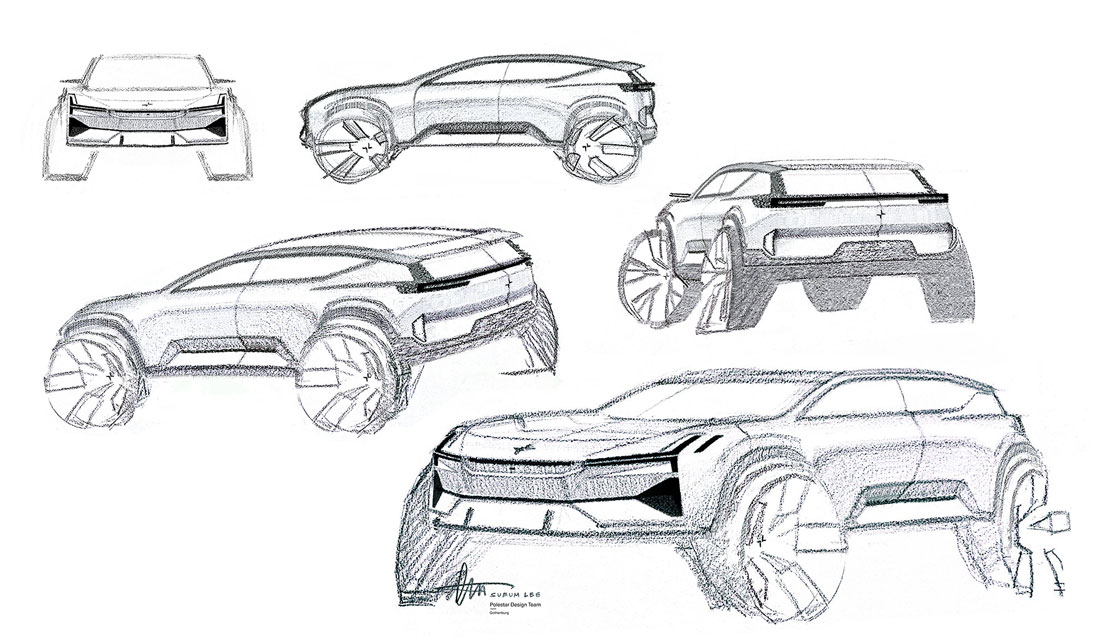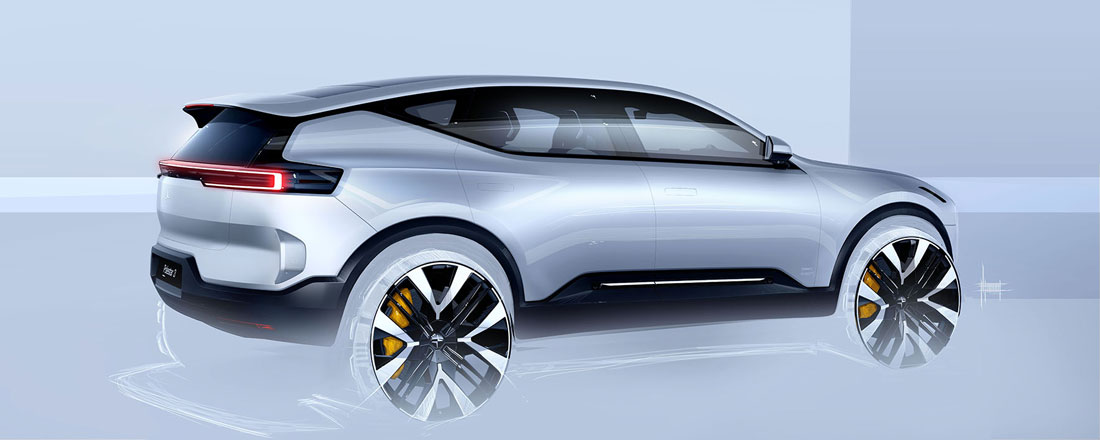Waiting to arrive at the right time. This was Polestar’s choice for the Polestar 3, its first SUV in the range revealed seven years after the brand’s début. A choice that on the surface would seem to go against the demands of an increasingly high-wheeled market. The reason? “To wait until the brand’s stylistic maturity was at the right point,” explains Maximillian Missoni, head of Polestar design.
Different from all the others
When seen live, the Polestar 3 mixes the canons of sportier bodies such as saloons and coupés with those of high-wheelers. Its definition as an SUV is established by its 1.6 metre stature, but the height of the belt line and the fast rear motion of the roof line bring it closer to the typical shapes of high performance cars. “Just by looking at it you see something different from all the others: it has a simple beauty, a pure form that isn’t dirtied by chrome or other additional elements,” continues Missoni, who worked extensively with his team on the aerodyna-mic optimisation of the Polestar 3.
The Smart Zone area
The front wing allows it to glide better through the air, as do the handles that are flush with the bodywork and the spoiler that overhangs the truncated tail. And if one of the strongest propositions in the premium world is the enormous amount of technology that equips cars, Polestar has decided to show it off on its SUV by dedicating an entire area of the front of the car to it: “We have called it the Smart Zone and it is the portion of the bodywork that groups together many of the sensors on the car at the base of the wing. This is how we enhance the technology of the Polestar 3 and show it to everyone.
LiDar looks at the road
The Smart Zone is slightly recessed compared to the rest of the bodywork (“it is protected from the small bumps when parking”), heated (“so it can be used in all weather conditions”) and houses radar and cameras, while the Luminar LiDar for its best performance has been placed on the windscreen at the highest and most central point: “It is a big eye that communicates with all the other sensors for maximum precision during assisted driving. The SPA2 platform, the basis for the Polestar 3, is an architecture not exclusively reserved for electric models.
Plenty of space for those sitting in the back
“This did not place too many restrictions on space, we were able to position the wheels at the four extreme corners, create a long wheelbase (2.98 metres) and achieve a flagship like interior,” continues Missoni. There’s a trick: the extra centimetres at the rear were obtained by moving the second row of seats further back.
Sustainable interiors
The layout of the tech elements includes a 14.5-inch vertical panel for the infotainment system developed by Google and a display in front of the driver showing essential driving information, while regarding the materials the focus is on sustainability, a subject always dear to Polestar. Customers can choose between MicroTech (vinyl and recycled polyester fabric), wool or Nappa leather produced in Scotland by Bridge of Weir following certified sustainability standards and a manufacturing process that excludes the use of chrome.
(Full article in A&D no. 258)
















